Hanzi Alive!(4)
Chinese characters are a millennium-old form of art, embodying the observations of ancient people on life. "田" represents the vast expanse of farmland, "男" symbolizes the strength in the field, "女" portrays the gentle demeanor of women, and "人" serves as the central figure in all these stories. Today, let's step into the realm of ancient Chinese agriculture and family life using these five characters.
田(tián)
Explanation:
This character represents a "field" or "farm." Thousands of years ago, Chinese-style farms resembled those of today, with intersecting ridges and plots of land used for planting.
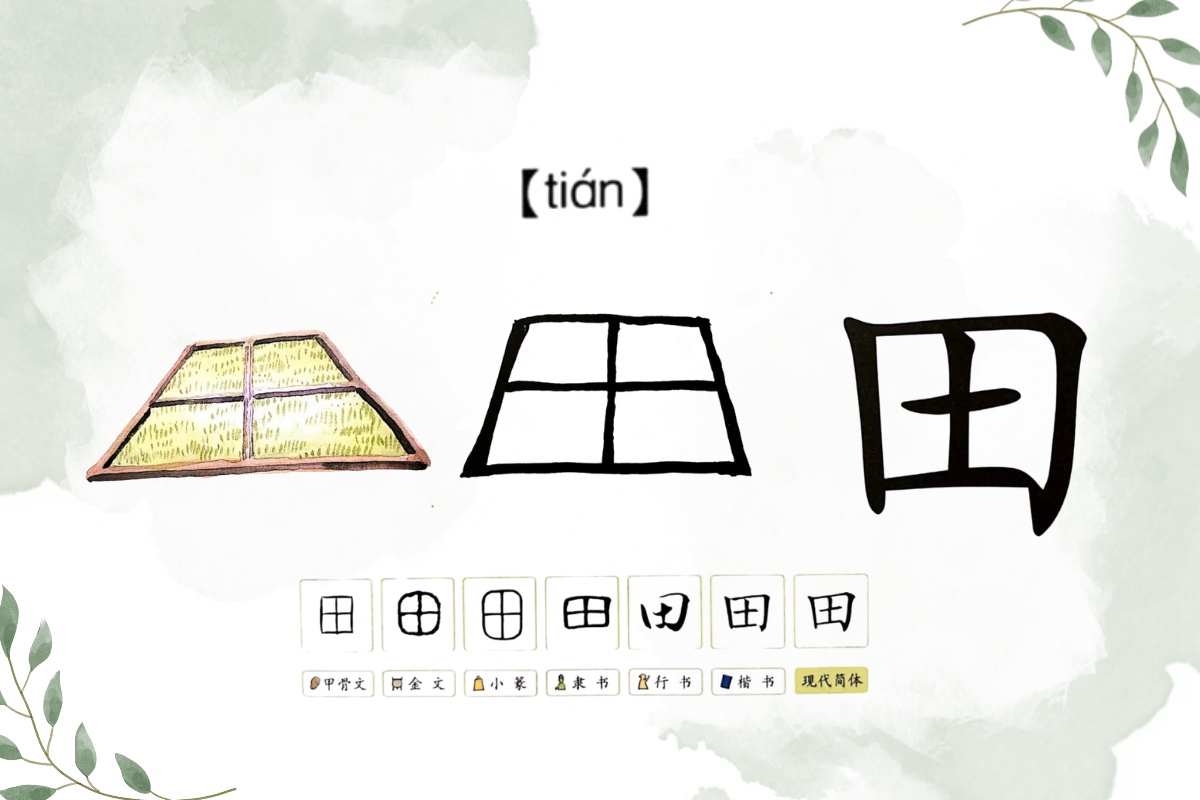
Example:
The wheat in the field is ripe.
田地里的麦子熟了。
Tián dì lǐ de mài zi shú le.
They are working in the field.
他们在田里劳作。
Tā men zài tián lǐ láo zuò.
The field ridges are covered with wild grass.
田埂上长满了野草。
Tián gěng shàng zhǎng mǎn le yě cǎo.
Find and circle the "田" in the image:
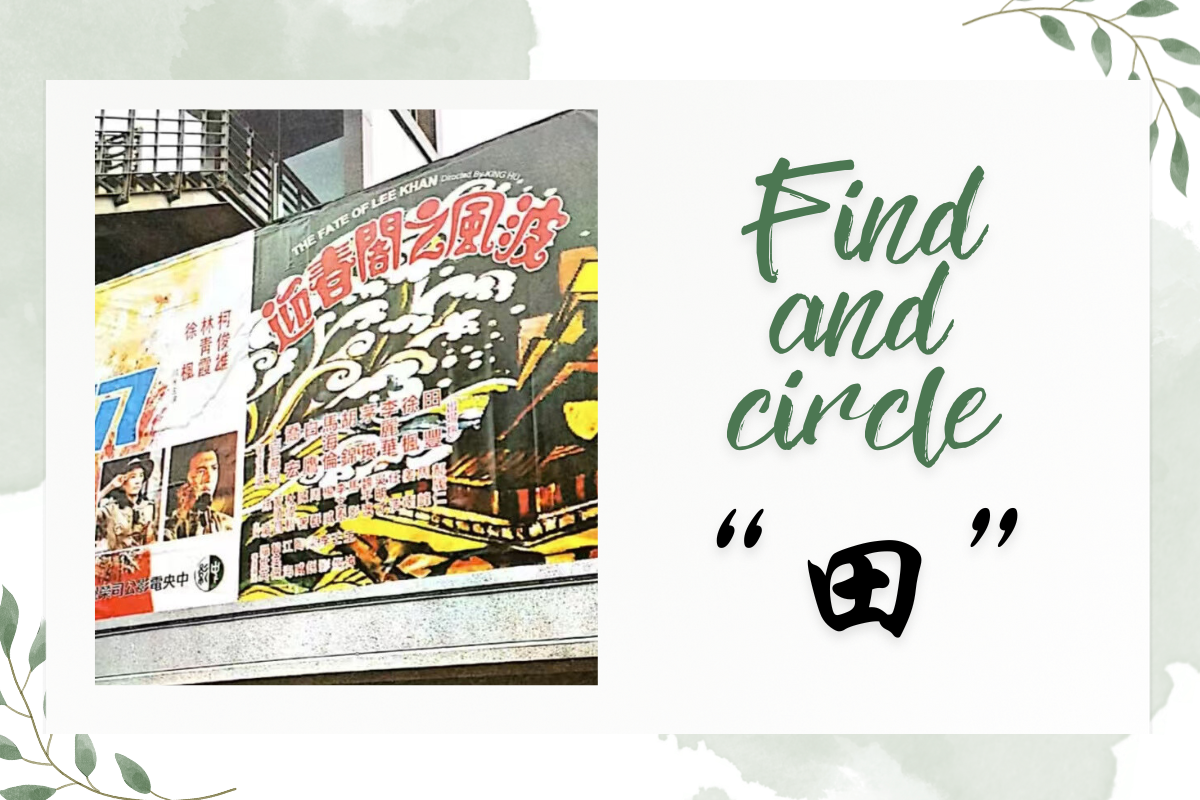
男(nán)
Explanation:
"男" means "male" and is easily recognizable by its oracle bone inscription depicting a man farming with a plow. The modern character combines "田" (farm) and "力" (strength), with rectangles on top for easy recognition.
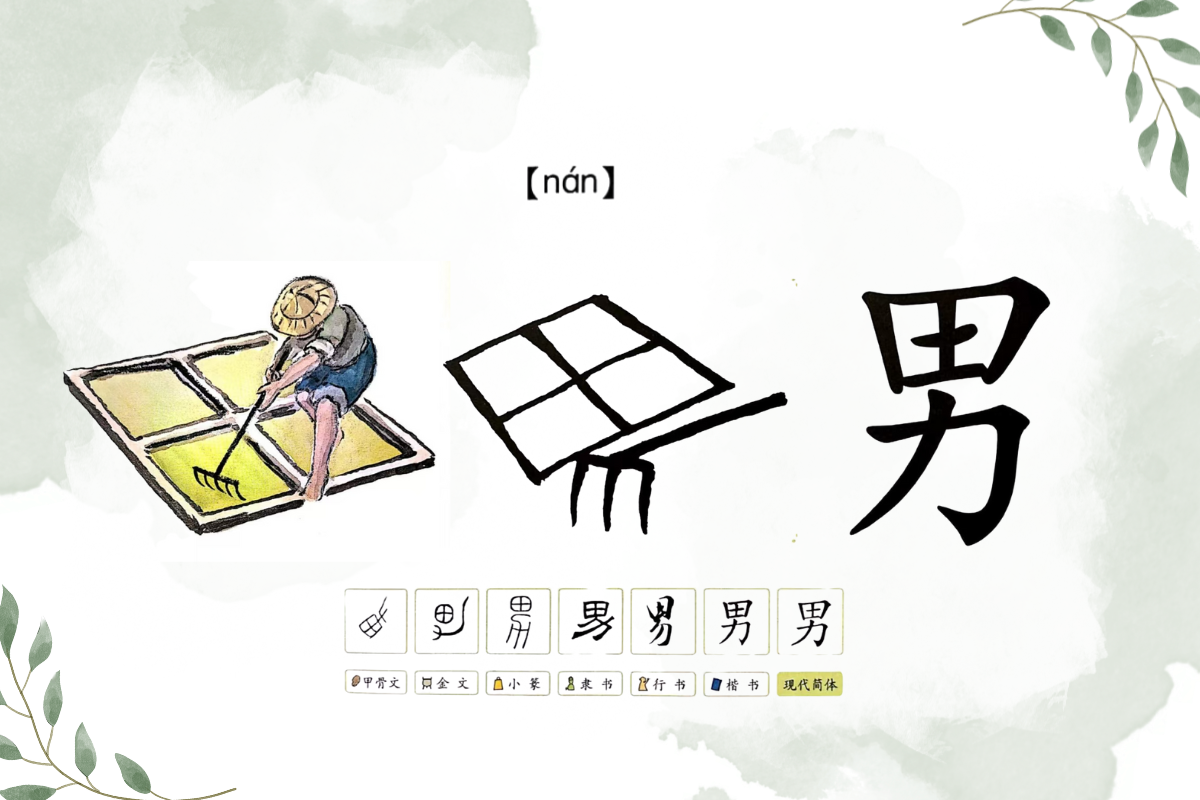
Example:
He is a male student in our class.
他是我们班的男同学。
Tā shì wǒ men bān de nán tóng xué.
This boy is very strong.
这个男生力气很大。
Zhè ge nán shēng lì qi hěn dà.
This little boy is reading.
这个小男孩在看书。
Zhè ge xiǎo nán hái zài kàn shū.
Find and circle the "男" in the image:
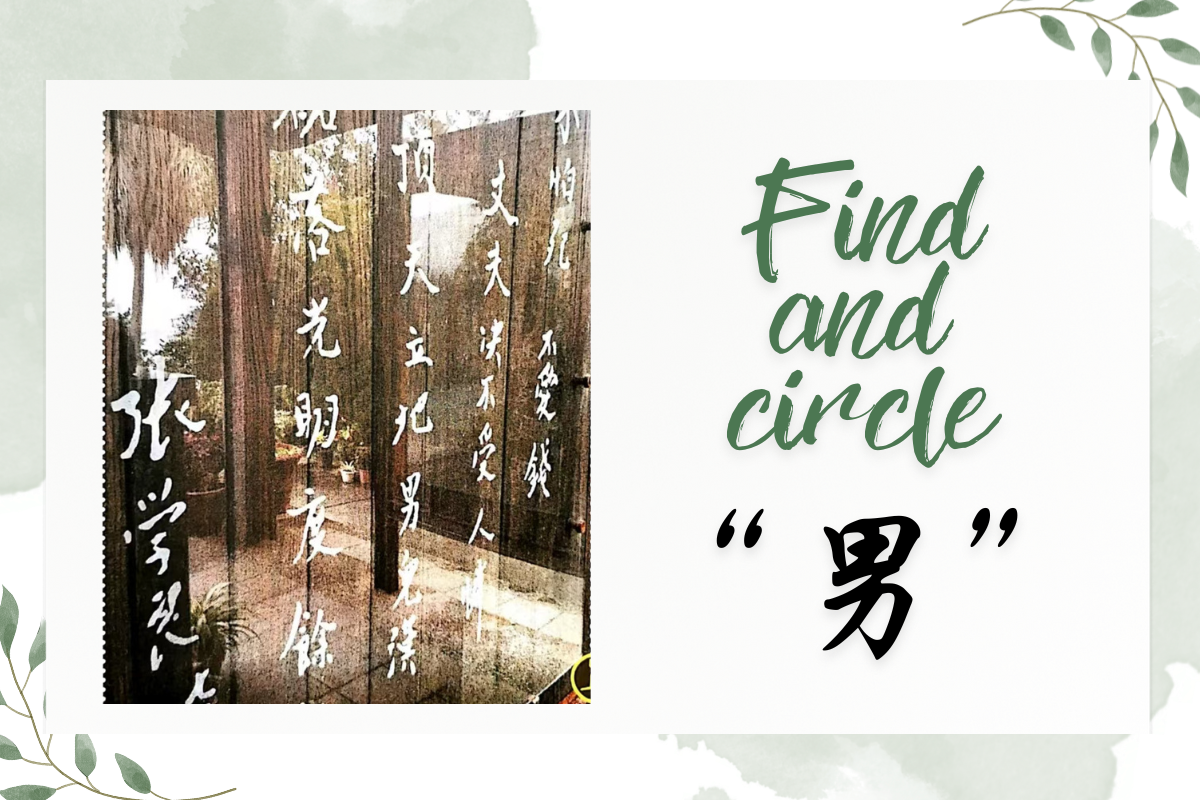
女(nǚ)
Explanation:
"女" represents "woman" or "female," depicting a person half-sitting and half-kneeling in a relaxed pose with hands folded on the knees.
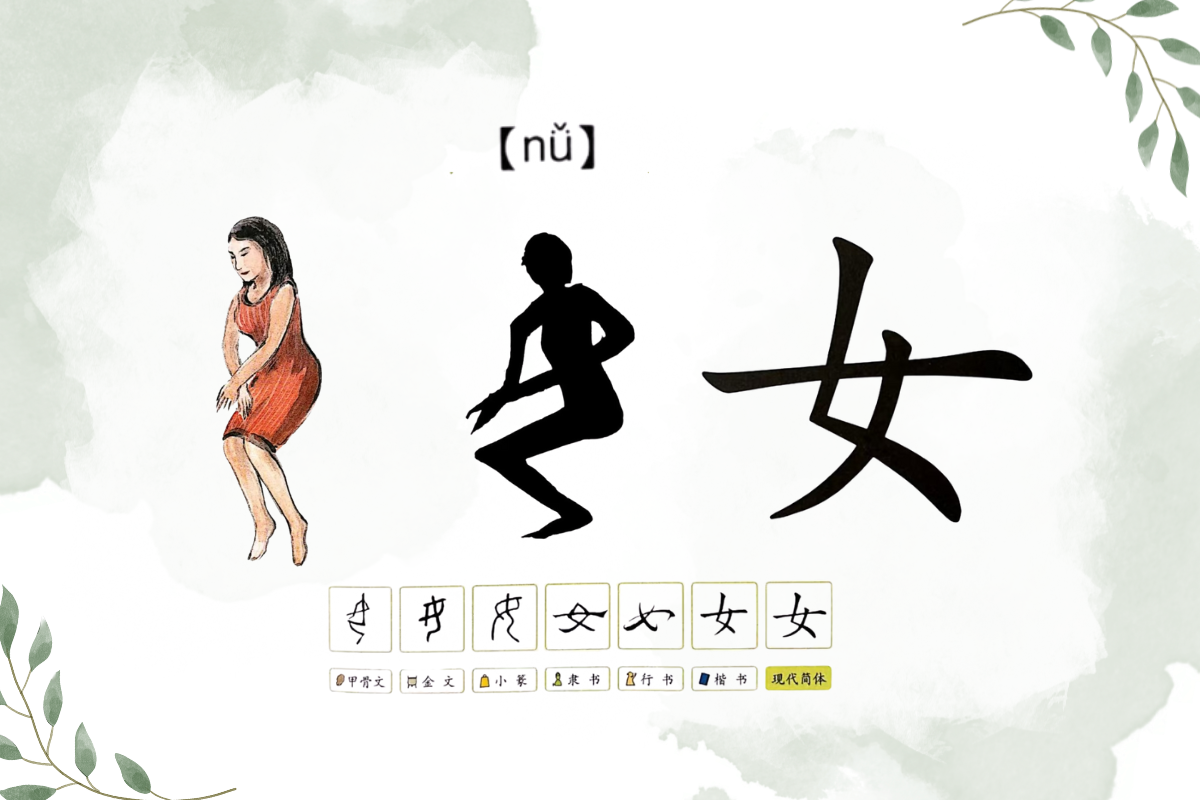
Example:
There are many female students in the classroom.
教室里有很多女生。
Jiào shì lǐ yǒu hěn duō nǚ shēng.
She has a daughter.
她有一个女儿。
Tā yǒu yí gè nǚ ér.
She is a female writer.
她是一个女作家。
Tā shì yí gè nǚ zuòjiā.
Find and circle the "女" in the image:
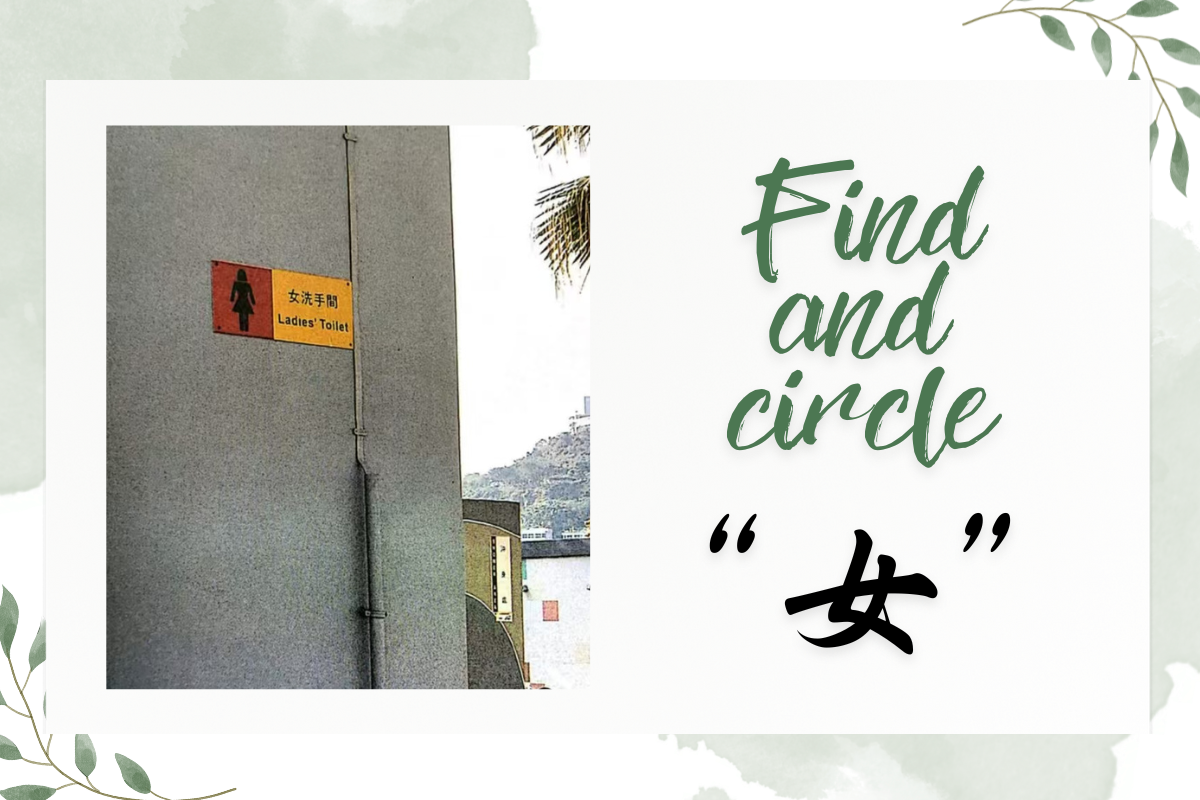
安(ān)
Explanation:
"A woman in a house signifies peace," which is represented by the character "安." Combined with other words, "安" forms phrases like "早安" (good morning), "安好" (safe and sound), and "日安" (good day).
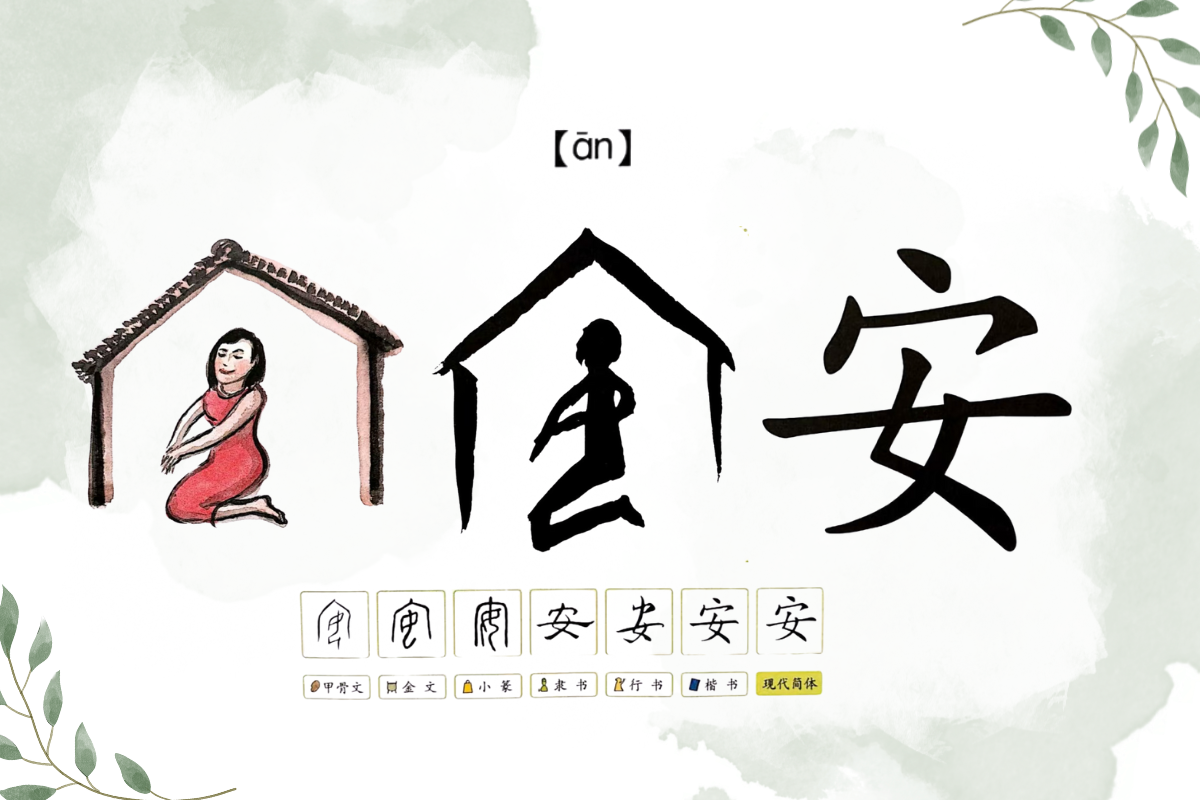
Example:
Pay attention to safety!
注意安全!
Zhù yì ān quán!
Make sure to return safely!
一定要平安归来!
Yí dìng yào píng ān guī lái!
She is comforting that girl.
她在安慰那个女孩。
Tā zài ān wèi nà ge nǚ hái.
Find and circle the "安" in the image:
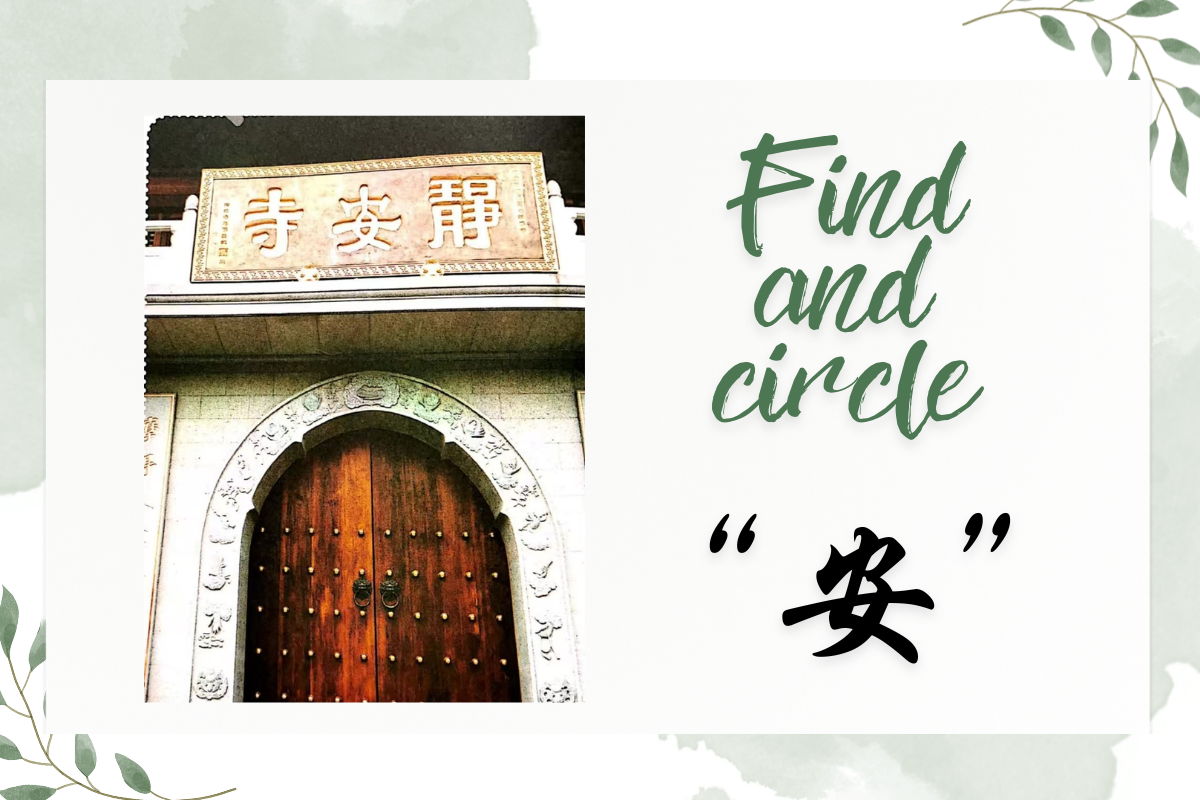
人(rén)
Explanation:
After discussing "women," we now explore words related to men. The character "人" means "a man," but universally refers to all genders. Developed from a pictograph showing the profile of a standing person.
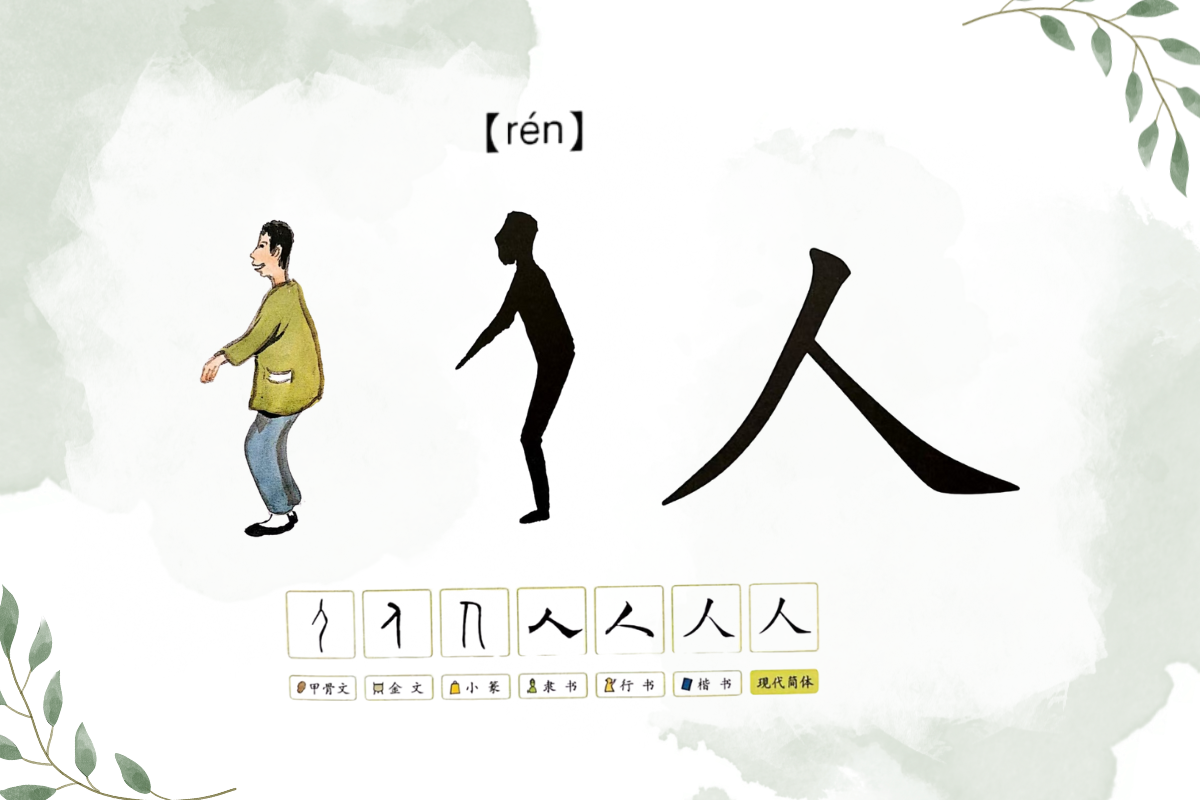
Example:
People all love liveliness.
人们都爱热闹。
Rén men dōu ài rè nao.
Defending peace is the responsibility of humanity.
捍卫和平是人类的责任。
Hàn wèi hé píng shì rén lèi de zé rèn.
That is someone else's child.
那是别人的孩子。
Nà shì bié rén de hái zi.
Find and circle the "人" in the image:
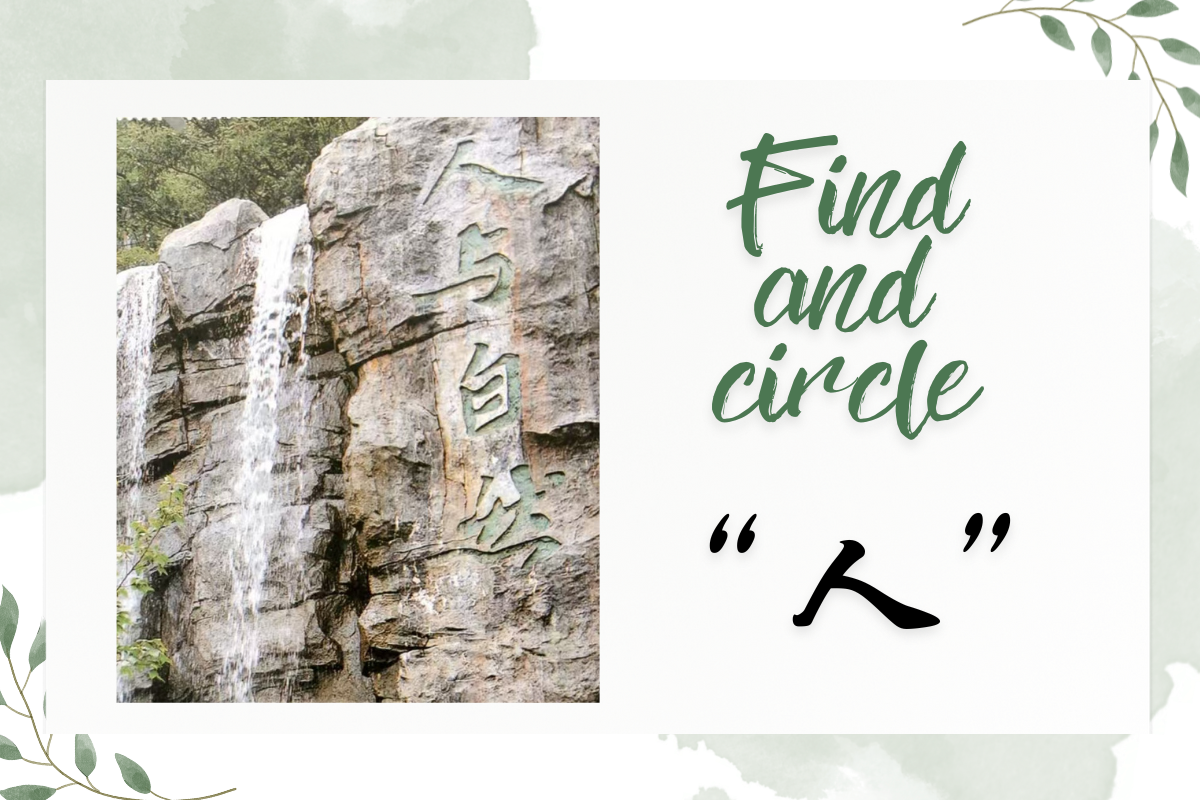
Now you understand: "田" is the land, "男" and "女" represent the two forces of life, "安" signifies the peace in the home, and "人" - the starting point and destination of it all. The world of Chinese characters is closer to everyday life than you imagine.